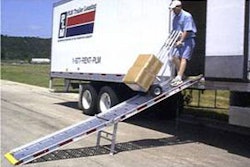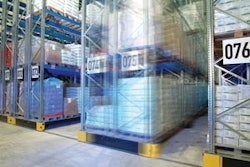Selecting warehouse storage rack systems involves specific expertise, appropriate system choices and ensuring the facility is ready - all of which affect capital expenditures, overhead and the efficient response to distribution needs.
Whether setting up or replacing storage rack systems, warehouse operators are often confronted with a dazzling number of choices. That can be troublesome, since the selections they make will dramatically affect throughput, and hence the profitability of the operation. On the other hand, they may be offered limited choices because a rack manufacturer or dealer specializes only in certain types of racks, a scenario that is often even more problematic.
"Because warehouse storage and material handling have a pivotal impact on a business, manufacturers and distributors often turn to storage rack specialists," says Arlin Keck, corporate engineer at Steel King, a manufacturer of pallet rack systems. "They rely on material handling consultants, dealers or rack manufacturers like us to ensure that their warehouse systems fit their needs."
Matching business needs with the appropriate rack system is critical and entails asking the right questions as well as providing flexibility in solutions that can accommodate variables such as capital resources, anticipated growth and variable product lines. That flexibility requires doing business with a supplier who can offer a variety of rack system designs, structural materials, accessories and, in some cases, customized equipment.
According to Keck, it is also advisable for warehouse operators to purchase from suppliers that comply with essential safety and structural standards set forth by the Rack Manufacturers Institute (RMI). Some of his suggestions include:
Consider storage density--Choosing the right storage rack system involves a solution process, and that begins with considering the flow of merchandise. That will dictate your density requirements—how 'tightly' that merchandise should be stored. From that determination cascades a series of specifications: the material and style of racks, pick systems, ancillary material handling, etc.
Warehouses with high-density storage solutions usually have large or even complete turnover of inventories during specific intervals or seasons. During these times, merchandise is often stored en masse in large bays with few access aisles to maximize floor space.
Conversely, lower-density warehousing is appropriate for parts or retail distribution centers where custom orders are picked continuously to fulfill just-in-time or other time-critical requirements. "We have bulk shipments coming in one set of dock doors and customized packages going out another set of dock doors," explains Keck. "Often, located near the center of the DC, are rack-supported pick modules that specialize in the re-packaging effort."
Selecting the appropriate rack system--Depending on density requirements, a specific pallet rack system, or combination of systems, may best serve the warehousing and shipping needs of a business.
The most popular type of rack is selective rack, so called because it allows easy selection, normally by service (truck) aisles. Selective racking does not make the most complete use of floor space due to the aisles required, but may be the ideal solution for many companies.
A drive-in rack, on the other hand, increases density and is often used where group pallet selection is more likely than individual pallet selection. With drive-in racking, loading and unloading within a bay must be done from the same aisle. A similar system called the drive-through rack permits loading and unloading from both ends of a bay. Cantilever racking is primarily used to store bulk items such as building materials (lumber, pipe, drywall, etc.) and furniture. It is commonly found in home centers and furniture warehouses. Cantilever racking is easily identified by the arms protruding from the face of the columns.
Structural Requirements--"Because no two warehouses are identical in every respect, it is important to consider and solve structural requirements," Keck says. "That may include issues to do with building obstructions, office and door locations, seismic (earthquake) conditions, the floor slab, and so on. It could be that a variety of the pallet rack systems of varying densities provide the best solution.
Also, there are two types of steel that are used in the majority of pallet rack systems, so it may be important to work with a supplier who can provide both. "Roll-form steel" rack frames and beams are fashioned from steel coils, and are bent into a tubular shape. "Structural steel" frames and beams are hot-rolled into channel at the mill, with holes punched into it by the rack manufacturer.
"Both types are widely popular and have advantages," Keck says. "While the majority of manufacturers offer one or the other, we think it's important to offer both."



















